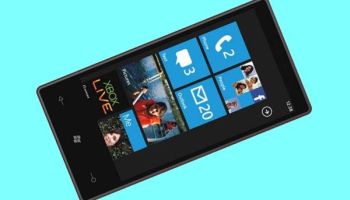Windows Phone Sales Hit 1.6m Units in Q1

Gartner has estimated that 1.6 million Windows Phone 7 handsets were sold in the first quarter of 2011
A clue has been offered in the ongoing question marks over actual consumer sales of Windows Phone 7 handsets, after Gartner research said 1.6 million units were sold in the first quarter.
The smartphones, which represent Microsoft’s all-or-nothing attempt to take market share from the likes of Google Android and the Apple iPhone, originally made their debut in late 2010.
Windows Phone “devices launched at the end of 2010 failed to grow in consumer preference and CSPs [communication service providers] continued to focus on Android,” reads Gartner’s 19 May research note. However, “in the long term, Nokia’s support will accelerate Windows Phone’s momentum.”
Nokia Push
Microsoft’s deal with Nokia will see Windows Phone ported onto the latter’s hardware. As Nokia begins to abandon its homegrown Symbian platform in favour of Microsoft’s offering, however, it could create an opening for the companies’ competitors to seize additional market share.
 “This will precipitate a competitor’s rush to capture Symbian’s market share in the mid-tier,” Roberta Cozza, principal research analyst at Gartner, wrote in the 19 May research note. Should Google or Apple succeed, it could prove an unwelcome consequence to an agreement designed to bolster Microsoft’s and Nokia’s fortunes in the space.
“This will precipitate a competitor’s rush to capture Symbian’s market share in the mid-tier,” Roberta Cozza, principal research analyst at Gartner, wrote in the 19 May research note. Should Google or Apple succeed, it could prove an unwelcome consequence to an agreement designed to bolster Microsoft’s and Nokia’s fortunes in the space.
Microsoft is also developing a substantial Windows Phone update, code-named “Mango,” which will introduce a broad range of consumer and enterprise functionality, including the ability to search a server for email items no longer stored on the device, and share and save Office documents via Office 365 and Windows Live SkyDrive. “Mango” will also include Bing Audio, which identifies any songs playing in the vicinity, and Bing Vision, an augmented-reality feature that lets a smartphone’s camera scan bar codes and QR Codes.
Smartphone Growth
Despite the challenges facing Windows Phone, the past quarter was a good one for smartphones as a whole. “Smartphones accounted for 23.6 percent of overall sales in the first quarter of 2011, an increase of 85 percent year-on-year,” Cozza wrote. “This share could have been higher, but manufacturers announced a number of high-profile devices during the first quarter of 2011 that would not ship until the second quarter of 2011.”
The current advantage lies with smartphones that offer a broad apps ecosystem. “Every time a user downloads a native app to their smartphone or puts their data into a platform’s cloud service, they are committing to a particular ecosystem and reducing the chances of switching to a new platform,” she added. “This is a clear advantage for the current stronger ecosystem partners Apple and Google.”
Recent data from The Nielsen Company had 6 percent of consumers indicating they wanted a Windows Mobile/Windows Phone 7 smartphone as their next device, compared with 31 percent for Android, 30 percent for Apple’s iOS and 11 percent for Research In Motion’s BlackBerry.